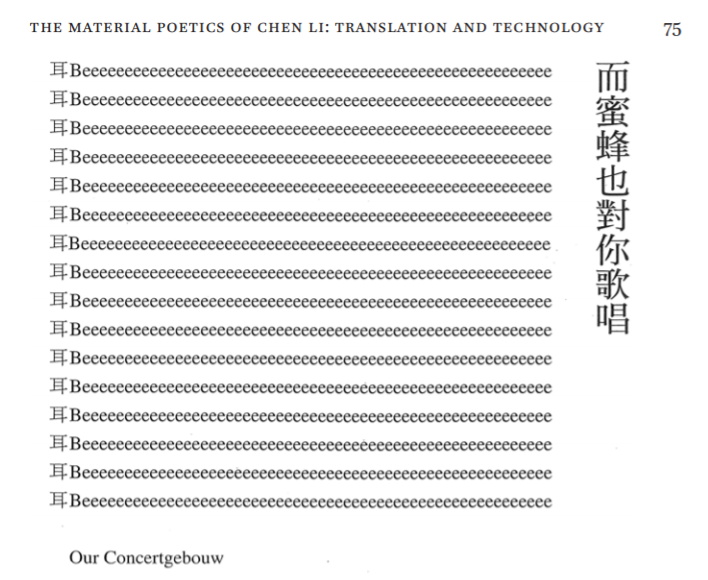From cultures of violence to ways of peace by Anne Elvey
From cultures of violence to ways of peace: reading the Benedictus in the context of Australia’s treatment of asylum seekers in offshore detention
Revised version of a paper given at ‘Things That Make for Peace: Peace and Sacred Texts Conference’, hosted by School of Theology & Centre for Islamic Studies and Civilisation, Charles Sturt University, at United Theological College, North Parramatta, 7–9 March 2018.
The author acknowledges the traditional owners of the Parramatta area: the Burramattagal people of the Darug nation, and pays her respects to the elders past, present and emerging, recognising their continuing connection with and custodianship of this place, especially the river.
***
On 31 October 2017, the Regional Processing Centre housing asylum seekers in detention on Manus Island—many of whom had been confirmed as refugees—was closed. For months beforehand, the men detained, as well as refugee advocates and agencies, had warned that the Australian and Papua New Guinean Governments had not properly prepared for this closure. Around 600 men were to be moved to facilities in Lorengau, Hillside Haus and West Lorengau; supporters and human rights observers reported that these facilities were unready. Moreover, before the date for transfer, essential services of food, water, medical care, power and security were phased out and finally withdrawn. The men who had already been protesting their detention and impending forced transfer to sites they believed, with reason, to be unready and unsafe, refused to be moved. They staged a nonviolent resistance for 22 days from 31 October to 22 November 2017 when they were forcibly removed and transported to the new facilities.
Of the months leading up to the closure of the Regional Processing Centre, Behrouz Boochani, a Kurdish journalist and writer from Ilam in Iran, who had already been held on Manus Island for over four years, wrote: ‘For many months, the refugees living inside Manus prison have had to endure extraordinarily oppressive conditions orchestrated by the Australian government’ (‘Letter’). Though not the only public voice among the detainees, Boochani—especially through his articles in The Guardian and The Saturday Paper, and his daily Twitter and Facebook posts—became a key communicator of the men’s situation to Australians, calling both people and government to account for the treatment of asylum seekers and refugees on Manus and Nauru. The nonviolent action of the men, and the response to it by Papua New Guinea officials in collaboration with the Australian Federal Government, became a test case for the ongoing Australian policy of offshore detention. For many Australians, it is clear that offshore detention is neither sustainable nor desirable, and needs urgent change that is tragically not forthcoming. Many, however, remain indifferent.
Serially, since the time of the Howard Government’s response to the sinking of the Siev X in 2001, Australian Governments—both Coalition and Labor—have enacted policies of border protection where deterrence of people arriving by boat, using so called ‘people smugglers’, are based on cruelty to detainees, though arguably such cruelty has escalated under the current Coalition Government.
In this essay I focus on Australia’s treatment of asylum seekers in detention, particularly in those three weeks from 31 October 2017. The issue is not resolved, as recent reports of inadequate medical care—particularly in mental health—for detainees on Nauru and in the new facilities on Manus indicate (e.g. Davidson 2018a; Syed 2018). Since the forced transfer of the men, however, the Australian media has largely lost interest and even public Australian activism has died down, though there were rallies on Palm Sunday (25 March 2018) for refugees; on 1 March 2018 Asylum Seeker Resource Centre in Melbourne launched a campaign to #changethepolicy; and between 16 and 22 July 2018 #FiveYearsTooMany rallies were held around Australia.
Writing of ‘Undocumented Immigrants, Asylum Seekers, and Human Rights’, Mark Brett (2016, 163–64) comments, ‘The raw numbers of people seeking asylum in Australia, especially when considered in relation to national wealth, barely rate a mention in international analyses, yet national elections in Australia have been known to turn on “border protection” policies. / What, then, can biblical theology and ethics hope to contribute to the debates?’ In conversation with Habermas, Brett (2016, 35) sees a role for biblical theology in public discourse not in service of a ‘unified public culture, but rather, by a thickening of dialogue between religious and non-religious traditions’, so that ‘theological ethics towards the marginalised … inform’ political praxis. In this essay, I bring into conversation Boochani’s ‘A Letter from Manus Island’ and the Benedictus, a biblical hymn, understood as songs of protest. My aim is to suggest what might be elements of a cultural shift from violence to nonviolence, and what this shift should mean in relation to public response to offshore detention of asylum seekers.
Protest writing
Warren Carter (2011) identifies four key and ‘interweaving dynamics’ of African American and South African performative songs of protest from the US slave, civil rights, and South African apartheid eras. They are:
‘naming contexts of oppressive suffering’
‘bestowing dignity’
‘fostering hope for change’
‘securing communal solidarity’.
Carter applies these dynamics to an analysis of the songs of the Lukan infancy narratives (especially, The Magnificat and The Benedictus) and reads these as songs of protest in the context of oppressive Roman occupation and empire.
Briefly, Carter argues that in a theo-political frame the songs encode the perspective of the marginalised and name aspects of Roman empire as a context of oppressive suffering: in the Lukan songs the imperial social system of domination, resulting in economic oppression, operates contrary to divine purposes and results in the people’s need for divine assistance. The songs bestow dignity by construing the people and the divine as interrelated, as kin, with the divine present to the people. Carter (2011) writes:
The songs function to bestow dignity in the midst of dehumanizing oppression by naming the relationship with God, celebrating the favorable divine disposition experienced in their midst, recalling benign and faithful covenant commitments, awaiting vengeance, and echoing songs of previous interventions.
Interrelated is the way the songs offer an alternative vision of reality and so provide hope through appropriating and transforming key facets of Roman society; in the context of the Gospel of Luke, they offer a vision of release from debt and a peace different from the Pax Romana which functions as a tool of domination reinforcing the status quo. Finally, for Carter (2011), the songs suggest a communal understanding spanning past, present and future, and defining ‘community as one that benefits from’ divine intervention. Communal solidarity is secured by divine promise, and resists or unsettles the existing societal order with an alternative social vision.
Nonetheless, as Carter (2011) notes ‘the songs do not only resist, they also imitate and perpetuate the imperial structures that they oppose’. To some extent, this mimicry is inevitable, but the re-inscription of empire is a significant factor in the ways violence and nonviolence appear in the song of Zechariah (the Benedictus). Before I turn more closely to this song, I examine a description of nonviolent action in the face of violence, in Boochani’s ‘A Letter from Manus Island’.
Behrouz Boochani’s ‘A Letter from Manus Island’ and other writing
Boochani’s ‘Letter’ exhibits the four features of protest writing that Carter nominates. It begins with a description of a situation of oppressive suffering experienced by the detainees on Manus Island, naming the Regional Processing Centre and the new facilities as prison camps and the treatment of the 600 refugees who refused to move on 31 October 2017 as a regime of ‘extreme force and dictatorship’ (‘Letter’). Reports from Boochani, other detainees, visitors such as Tim Costello, Jarrod McKenna, and UN and other human rights observers during the 22 days of nonviolent protest tell of no provision of food, water or medical care, failed security, destruction of property by local officials, and piercing of makeshift water tanks, among other things.
Boochani writes of the way the men responded by claiming their dignity as human beings. This was vital to their action. He says: ‘The refugees were able to reimagine themselves in the face of the detention regime’ (‘Letter’). They resisted their characterisation as the ‘passive refugee’ that the Australian government had constructed as exploitable for their own political ends, and asserted ‘that we are human beings’ (‘Letter’). Central to this assertion was the men’s claiming of their freedom. This was not simply freedom as a future hope—that is, freedom from detention, though of course this was fundamental. They also asserted a deeper, hard-won—and in the circumstances difficult to sustain—freedom while in detention: to act as human beings with authority and choice. Boochani (2017c) describes this assertion of freedom as the key motivating factor for their action, in contrast to the practical reasons adduced by supporters—for example, the inadequacy of the new detention facilities. At one level this was a freedom that cried ‘enough is enough’, ‘we will not be moved from one prison camp to another prison camp’ (Boochani 2017c). At another level, this drawing the line was a claiming of their shared humanity.
Freedom gave hope in their shared situation. Boochani writes: ‘We learnt that humans have no sanctuary except within other human beings’ (‘Letter’). Given the intransigence of the current Australian government concerning offshore detention, evidenced in the tone of what one friend in Melbourne describes as the ‘robot letters’ from Peter Dutton MP’s office, it is hard to see how hope is possible. But both in his ‘Letter’ and elsewhere, Boochani (2017e), describers the way the land of Manus and its surrounding sea were sites of hope, as:
the violence designed in government spaces and targeted against us has driven our lives towards nature … since we hope that maybe we could make its meaning, beauty and affection part of our reality. And coming to this realisation is the most pristine, compassionate and non-violent relationship and encounter possible for the imprisoned refugees in terms of rebuilding our lives and identities. (‘Letter’)
The choice the men took, while sustained by the surrounding beauty of the natural world when there was little else to sustain them, also secured a sense of communal solidarity. Boochani’s ‘Letter’ describes this solidarity in terms of democracy, respect for the freedom of each, care for the sick, sharing of food, co-operation concerning provision of vital needs, and cross-species kindness. What his description, his protest writing, adds to Carter’s analysis of African American and South African performances of protest, moreover, is this: an articulation of a political poetics. ‘Our resistance’, Boochani writes, ‘enacted a profound poetic performance’; ‘it was an epic of love’, he says (‘Letter’). Moreover, for Boochani, this resistance is a challenge to Australians’ self-perception, a haunting which I suggest echoes the haunting of Australia’s colonial past and present in relation to Indigenous peoples: ‘[Australians] would come to realise something about how they imagined themselves to be until now. … regarding their illusions of moral superiority’ (‘Letter’). He writes, ‘Our resistance is a new manifesto for humanity and love.’
While some of the men who took part in the nonviolent resistance have begun to be resettled in the US, many remain in detention in the new facilities on Manus, and stories regularly emerge of those with illnesses, especially mental illnesses, not receiving adequate treatment. In May 2018, after an earlier version of this essay was presented in North Parramatta, another refugee detained for years died tragically on Manus Island. Boochani commented at the time about the failures to treat this man’s illness over several years (Davidson 2018b).
Boochani was born in 1983, only six years before the older of my two sons, and many of the men on Manus are young men, some of whom were teenagers when they were taken into detention. We fail to imagine our adult children in this situation; we fail to be haunted by this imagining.
Reading the Benedictus
The Benedictus is a powerful song. Reading this text in conversation with Boochani’s ‘A Letter from Manus’, however, I am tempted to feel that the biblical song will come off second best. In the light of Boochani’s piece—which does not reinscribe violence in its language as far as I can see—I want to ask about the flow of the language in the Benedictus and the kind of culture it envisages, keeping in mind the ways Boochani’s letter unsettles Australian cultural imaginaries of moral superiority.
The New Revised Standard Version English translation of the Benedictus reads:
v68 Blessed be the Lord God of Israel,
for he has looked favorably on his people and redeemed them.
v69 He has raised up a mighty savior for us
in the house of his servant David,
v70 as he spoke through the mouth of his holy prophets from of old,
v71 that we would be saved from our enemies and from the hand of all who hate us.
v72 Thus he has shown the mercy promised to our ancestors,
and has remembered his holy covenant,
v73 the oath that he swore to our ancestor Abraham,
to grant us
v74 that we, being rescued from the hands of our enemies,
might serve him without fear,
v75 in holiness and righteousness
before him all our days.
v76 And you, child, will be called the prophet of the Most High;
for you will go before the Lord to prepare his ways,
v77 to give knowledge of salvation to his people
by the forgiveness of their sins.
v78 By the tender mercy of our God,
the dawn from on high will break upon us,
v79 to give light to those who sit in darkness and in the shadow of death,
to guide our feet into the way of peace. (Luke 1:68–79 nrsv)
The kyriarchal language (the language of lordship) of the song is unavoidable in the opening ‘Blessed be’ kurios ho theos tou (the Lord God of) Israel (v68) (Schüssler Fiorenza 1992). Immediately the performing-listening community is situated in relation to the divine as a people in relation to their lord or overlord, even master. However benignly intended, the language of empire insinuates itself into the relationship between a people and their god, who has visited (episkepsato) them enacting a redemption (which is also loosening of their bonds lutrosin, salvation soteriav, release aphesis). Visitation can refer to judgement of, as well as care for, the people, and in the wider Gospel of Luke is marked by hospitality, aphesis (release from debts and forgiveness), and compassion (Elvey 2009; Byrne 2000). In the Benedictus, too, mercy/compassion (vv72, 78) will become part of the scope of this visitation which has happened in the past and continues into the future. But the imperial imprint in the description of divine/human relation is evident in the ascription of the ancestor David as paidos (slave/servant/child, v69)—the familial androcentric kinship imagery of father-son crosses with the imagery of master-slave (as in the Magnificat where Mary refers to herself as doule, slave, v48). Salvation is imaged by a horn (keras) (v69) recalling military language for the flank or wing of an army (as well as the thrusting or defending horn of an animal; see for example Marshall 1978), though the English translation I have cited above smooths over this.
Community solidarity reaches into the past with the appeal to the word of the prophets (v70), and into the future with the promise of the prophecy of the little child (presumably John the Baptist) (v76) joined in the present prophetic word of his father Zechariah (vv68–79). These words are part of a series of gusts of prophecy: the words of Elizabeth and Mary (1:42–45; 47–55), those of Simeon (2:29–32; 34–35) and the unrecorded words of the prophet Anna (2:36). Salvation (v69) in this communal context is liberation from enemies, those who hate (vv71, 74).
Talk of enemies in verses 71 and 74 sandwiches the divine enactment of mercy toward the ancestors of the people as constituted in the memory of the covenant (v72). The seriousness of the covenant is signalled by the recollection of a divine oath (orkon) to Abraham (v73). The people are given release from fear and a capacity to worship in freedom (v75). To what extent this suggests an imperial context where worship is not experienced as free from fear is unclear, but the implication seems to be that deliverance from enemies involves a kind of religious freedom (Pickett 2011). This is the first major shift in the song. Military language and talk of enemies gives way to a different vision described by piety/holiness/wholeness and righteousness/justice, the two signalling right relation with the divine and with other humans.
A second shift follows with the turn to the newly-born child. Repeating the earlier designation of David as paidos, the child stands in for the people. Echoing Isaiah 40, the child prepares the ways (hodous) of the divine or his messiah (v76), who confers knowledge of salvation. The song no longer refers to enemies but to aphesis (release/freedom, v77). Elsewhere in Luke (esp. 4:18), aphesis signals a kind of forgiveness that is not only metaphorical release from debts and debt-slavery, but also more broadly release from oppression (Elvey 2009), potentially the kind of freedom which Boochani (2017a, c) describes: a freedom that encompasses but is more than freedom from detention, being also the possibility of freedom in detention that is actualised not in acquiescence to the oppressive regime but in nonviolent resistance to it.
In the Benedictus, there is a pronouncement of freedom. In relation to the promised freedom, the divine experiences and performs mercy—from the entrails/guts (splanchna) (the seat of emotion) (v78). The description dia splanchna eleous (the tender mercies) of the divine echoes in the three uses of the verb splanchnizomai later in Luke’s gospel to describe a kind of compassionate responsiveness to another at the point of death (7:13; 10:33; 15:20; Elvey 2013; see also Grassi 2004). Here in the Benedictus, this mercy is a visitation (past and future), singular and repeated like the dawn (v78). Without explaining how this is to occur, the song evokes a transformation, expressed in the familiar terms of a movement from darkness to light, from ‘the shadow of death’ to life (v79). Life here means to have one’s feet guided/kept straight ‘in the way of peace’ (v79).
The song ends on this word peace (eirenes) as if this is where it was heading all along, from the military language of horns, the power language of lordship, the filial/servant/slave language of paidos, the language of the oppressed facing their enemies, toward the language of mercy which will become, in the parable of the Good Samaritan, mercy both toward and from another (‘the’ other)—and peace.
‘Peace’ is tricky in that Luke will contrast the peace (‘peace upon Earth’, 2:14), that arrives in the birth of the child Jesus, with the Pax Romana; and salvation as aphesis stands alongside the emperor as saviour. This is well-travelled ground in biblical studies. What I want to consider rather is the way Luke’s peace might be understood in relation to the ‘nonviolence’ described by Boochani. One aspect of Boochani’s writing that does not immediately seem to have a resonance in Luke’s Benedictus is the appeal to the consoling impact of the natural world and cross-species kindness. While cross-species kindness is not explicit anywhere in the Benedictus, the reference to anatole (east, dawn, morning, sunrise), in a way that is difficult to translate, suggests something of the impact of the natural world. Dawn and skies insert themselves as markers of—perhaps actors in—the drama of aphesis/freedom enabled by or through divine mercies.
In Boochani’s ‘Letter’ the enabling of freedom is not attributed (at least not explicitly) to a divine actor. Rather, community solidarity and natural beauty mutually reinforce each other in sustaining (with fragility at times) the hope that underscores the assertion and performance of freedom. It is a communal solidarity that performs compassion: the men’s solidarity for each other in practical ways; compassion for their companion dogs; and also for the readership, by calling Australians forth to a kind of metanoia (a change of heart) in relation to their own self-understanding, history and contemporary political social ethics. Poignantly, Boochani relates the fragility of this solidarity, freedom and compassion—this poetic performance in the face of violence:
This persisted until the moment we were confronted with the extremity of the violence. We found that the baton-wielding police had killed one of the dogs we had adopted into our community. At that moment, we descended into sorrow and wept,
in honour of its loyalty,
its beauty,
its innocence. (‘Letter’)
This was not the end of the story. Boochani relates other performative poetics of the men, and says toward the end of the ‘Letter’ that the ‘prison and its violence will never accept’ the reality of the ‘profound relationships’ the men built with local people, the environment, their adopted dogs, and each other.
Where the Benedictus refers to light shining on those sitting in the shadow of death, I read Boochani ‘in every situation the imprisoned lives and spirits have to reconfigure themselves in the face of death’ (‘Letter’). He goes on, ‘they avoid projecting the malevolent dimension of their existence as the most dominant’. He concludes his letter with appeals to feelings of friendship, compassion, companionship, justice and love.
The Benedictus closes with peace, and imagery that has shifted from a language of violence and violent resistance in its opening verses. It does not fully espouse nonviolent resistance, but opens a space for imagining what a way of peace might mean under the socio-cultural space impacted and shaped by the Roman empire. Biblical readers might extend this to the contemporary socio-political space of Australian violence toward asylums seekers, Indigenous peoples, Country and Earth itself. Peace in this context is more than nonviolent resistance, though this is part of it, more than the absence of war or of non-engagement in others’ wars, though this too is part of it. Peace is a socio-cultural ethos of aphesis—freedom in the face of oppression; freedom from oppression; freedom to turn from acts of oppression; freedom to recognise and resist our own imaginings of moral superiority; freedom for right relation not only with the divine and other humans, but also (and I would say especially, even primarily) with Earth; and freedom to be sustained by all of these.
Conclusion
I am in two minds about my drawing on Boochani’s work in this essay. On the one hand, I want to highlight the brilliance of his contemporary analysis of nonviolent action for an audience thinking about peace and nonviolence in biblical texts. On the other, while he and other asylum seekers and refugees remain in detention, I participate in their oppression as I enjoy the privileges of Australians society, and an essay like mine does little if anything to change this situation.
The prospect of a deep freedom for Australians remains out of reach while refugees like Boochani are kept in indefinite detention when they have committed no crime. If the Benedictus is addressed to people who are suffering oppression, albeit with the oppressors listening in, then we are the oppressors overhearing this song of protest that moves from violence to peace, and we are challenged to recognise ourselves and act. The way of peace that is the ‘end’ of the Benedictus means that like campaigners in Love Makes a Way, Writing through Fences and Grandmothers against Detention of Refugee Children, for example, Australian Christians must continue to work to support asylum seekers and refugees and act to change Government and Opposition policy on treatment of asylum seekers setting out to Australia by boat. An important part of this is speaking prophetically to those Christians who support such policies, including but not only in Government, especially in marginal electorates. The poetic styles of Boochani’s ‘A Letter from Manus’ and The Benedictus challenge us to find ways of speaking that enable a change of heart. The cruel practice of offshore detention which systematically denies freedom to some in order to deter others, means that at a deep level none of us are free.
Notes
1. Thank you to The Saturday Paper for permission to refer to and quote from Behrouz Boochani, ‘A Letter from Manus Island’ (The Saturday Paper, no. 186, December 9–15, 2017, pp. 1, 4).
2. Many of the reports from Boochani’s ‘Letter’ appeared in Facebook feeds from refugee advocates, and Tim Costello spoke movingly at the Palm Sunday Rally outside the State Library of Victoria on 25 March 2018.
3. Carter (2011) has considered the way the Benedictus alongside the Magnificat demonstrates the four aspects of protest songs he has identified, so for now I will not repeat that work. At present I offer a preliminary reading of the text. In a longer article, I propose to dialogue with several tropes of Boochani’s ‘Letter’, first the question of violence and second a supposed moral superiority by the oppressors, third the claim of freedom, fourth a more than human foundation for hope, fifth a haunting of the oppressive society by the oppressed, especially by the assertion of freedom of the oppressed. In conversation with these, I will consider some key terms and concepts from the Benedictus: divine visitation; salvation, redemption and release; enemies and hatred; slave/servant/child; ancestors; covenant/divine oath; prophets; mercy; death; peace; the poetics in the play of pronouns.
References and further reading
Bae, Hyun Ju. 2016. ‘Conversing with Luke on a Pilgrimage of Justice and Peace in Northeast Asia’. The Ecumenical Review 68, nos 2–3 (November): 167–84.
Boochani, Behrouz. 2018a. ‘Incarceration, Autonomy and Resistance on Manus Island’. Arena Magazine. https://arena.org.au/incarceration-autonomy-and-resistance-on-manus-island-by-behrouz-boochani/ Accessed March 31, 2018.
—. 2018b. ‘Four Years after Reza Berati’s Death, We Still Have No Justice’. The Guardian (February 17): https://www.theguardian.com/commentisfree/2018/feb/17/four-years-after-reza-baratis-death-we-still-have-no-justice. Accessed March 31, 2018.
—. 2018c. No Friend But the Mountains: Writing from Manus Prison. Translated by Omid Tofighan. Sydney: Picador.
—. 2017a. ‘A Letter from Manus Island’. The Saturday Paper 186 (December 9–15): 1, 4. [‘Letter’]
—. 2017b. ‘Manus police pulled my hair and beat me. “You’ve damaged our reputation,” they said’. The Guardian (November 24): https://www.theguardian.com/australia-news/commentisfree/2017/nov/24/manus-police-pulled-my-hair-and-beat-me-youve-damaged-our-reputation-they-said. Accessed March 2, 2018.
—. 2017c. ‘All We Want Is Freedom Not Another Prison Camp’. The Guardian (November 13): https://www.theguardian.com/commentisfree/2017/nov/13/all-we-want-is-freedom-not-another-prison-camp. Accessed March 2, 2018.
—. 2017d. ‘The Refugess Are in a State of Terror on Manus’. The Guardian (October 31): https://www.theguardian.com/commentisfree/2017/oct/31/the-refugees-are-in-a-state-of-terror-on-manus-behrouz-boochani. Accessed March 2, 2018.
—. 2017e. ‘Diary of Disaster: The Last Days inside Manus Island Detention Centre’. The Guardian (October 30): https://www.theguardian.com/commentisfree/2017/oct/30/diary-of-disaster-the-last-days-inside-manus-island-detention-centre. Accessed March 2, 2018.
Bovon, François. 2002. Luke 1: A Commentary on the Gospel of Luke 1:1–9:50, translated by Christine M. Thomas. Hermeneia 63A; ed. Helmut Koester. Accordance electronic ed. Minneapolis: Fortress Press.
Brett, Mark G. 2016. Political Trauma and Healing: Biblical Ethics for a Postcolonial World. Grand Rapids: Eerdmans.
Byrne, Brendan. 2000. The Hospitality of God: A Reading of Luke’s Gospel. Strathfield, NSW: St Pauls.
Carter, Warren. 2011. ‘Singing in the Reign: Performing Luke’s Songs and Negotiating the Roman Empire (Luke 1–2)’. In Luke-Acts and Empire: Essays in Honor of Robert L. Brawley, edited by David Rhoads, David Esterline, and Jae Won Lee, 23–43. Ebook. Princeton Theological Monograph Series 151. Eugene, OR: Pickwick.
—. 2006. The Roman Empire and the New Testament: An Essential Guide. Nashville: Abingdon.
Davidson, Helen. 2017. ‘Manus Island: UN says new accommodation “not ready” for refugees’. The Guardian (November 1): https://www.theguardian.com/australia-news/2017/nov/01/manus-island-un-says-new-accommodation-not-ready-for-refugees. Accessed March 2, 2018.
—. 2018a. ‘“Australia’s cut to healthcare on Manus Island inexplicable”, Amnesty says’. The Guardian (May 18): https://www.theguardian.com/australia-news/2018/may/18/australias-cut-to-healthcare-on-manus-island-inexplicable-amnesty-says. Accessed July 30, 2018.
—. 2018b. ‘Rohingya Refugee Held on Manus Dies in Motor Vehicle Accident’. The Guardian (May 22): https://www.theguardian.com/australia-news/2018/may/22/rohingya-refugee-held-on-manus-island-dies-in-motor-vehicle-incident. Accessed July 30, 2018.
Davidson, Helen and Ben Doherty. 2017. ‘Refugee and Journalist Behrouz Boochani Released after Arrest on Manus’. The Guardian (November 23): https://www.theguardian.com/australia-news/2017/nov/23/refugee-and-journalist-behrouz-boochani-arrested-in-manus-as-squad-steps-in. Accessed March 2, 2018.
Doherty, Ben. 2017a. ‘“The situation is critical”: Cholera fears on Manus as water and medicine run out’. The Guardian (November 20): https://www.theguardian.com/australia-news/2017/nov/20/the-situation-is-critical-cholera-fears-on-manus-as-water-and-medicine-run-out. Accessed March 2, 2018.
—. 2017b. ‘Manus refugee Behrouz Boochani asks for UK visa to attend screening of his film’. The Guardian (September 5): https://www.theguardian.com/australia-news/2017/sep/05/refugee-behrouz-boochani-asks-for-uk-visa-to-attend-screening-of-his-film. Accessed March 2, 2018.
Elvey, Anne. 2017. ‘Reading the Magnificat in Australia in Contexts of Conflict’. In Ecological Aspects of War: Engagements with Biblical Texts, edited by Keith Dyer and Anne Elvey, with Deborah Guess, 45–68. Bloomsbury T&T Clark.
—. 2013. ‘Rethinking Neighbour Love: A Conversation between Political Theology and Ecological Ethics’. In ‘Where the Wild Ox Roams’: Biblical Essays in Honour of Norman C. Habel, edited by Alan H. Cadwallader and Peter L. Trudinger, 58–75. Sheffield: Sheffield Phoenix.
—. 2009. ‘Can there be a forgiveness that makes a difference ecologically?: An eco-materialist account of forgiveness as freedom (aphesis) in the Gospel of Luke’. Pacifica: Australasian Theological Studies 22, no. 2 (June): 148–70
Flanagan, Richard. 2017. ‘Australia built a hell for refugees on Manus. The shame will outlive us all’. The Guardian (November 24): https://www.theguardian.com/australia-news/2017/nov/24/the-shame-of-the-evil-being-done-on-manus-will-outlive-us-all. Accessed March 2, 2018.
Ford, J. Massyngbaerde. 1984. My Enemy is My Guest: Jesus and Violence in Luke Maryknoll, NY: Orbis Books.
Gilbert, Gary. 2006. ‘Luke-Acts and the Negotiation of Authority and Identity in the Roman World’. In The Multivalence of Biblical Texts and Theological Meanings, edited by Christine Helmer and Charlene T. Higbe, 83–104. Atlanta: Society of Biblical Literature.
Grandmothers against Detention of Refugee Children. http://gadrc.org/
Grassi, Joseph. 2004. Peace on Earth: Roots and Practices from Luke’s Gospel. Collegeville: Liturgical Press.
Guardian Staff. 2017. ‘Behrouz Boochani Wins Amnesty International Award for Writing from Manus’. The Guardian (November 2): https://www.theguardian.com/media/2017/nov/02/behrouz-boochani-wins-amnesty-international-award-for-writing-from-manus. Accessed March 2, 2018.
Hamilton, Andrew. 2017. ‘With Remembrance Goes Compassion: Manus’. Eureka Street 27, no. 23 (November 25): https://www.eurekastreet.com.au/article.aspx?aeid=54390. Accessed March 2, 2018.
Horsley, Richard A. 1989. The Liberation of Christmas: The Infancy Narratives in Social Context. New York: Crossroad.
Love Makes a Way. https://actionnetwork.org/groups/love-makes-a-way-australia
Marshall, I. Howard. 1978. The Gospel of Luke. NIGTC. Grand Rapids: Eerdmans.
Neville, David J. 2013. A Peaceable Hope: Contesting Violent Eschatology in New Testament Narratives. Grand Rapids: Baker Academic.
Pickett, Raymond. 2011. ‘Luke and Empire: An Introduction’. In Luke-Acts and Empire: Essays in Honor of Robert L. Brawley, edited by David Rhoads, David Esterline, and Jae Won Lee, 1–22. Ebook. Princeton Theological Monograph Series 151. Eugene, OR: Pickwick.
Reid, Barbara E. 2007. Taking up the Cross: New Testament Interpretations through Latina and Feminist Eyes. Minneapolis: Fortress.
Schüssler Fiorenza, Elisabeth. 1992. But She Said: Feminist Practices of Biblical Interpretation. Boston: Beacon Press.
Syed, Sarah. 2018. ‘Responsibilities of Health Professionals Regarding the Refugee Crisis’. onthewards (March 26). https://onthewards.org/responsibilities-of-health-professionals-regarding-the-refugee-crisis/. Accessed July 30, 2018.
Writing through Fences. http://writingthroughfences.org/
ANNE ELVEY is an Australian poet, researcher and editor, author of White on White (Cordite Books 2018), Kin (FIP 2014), co-author with Massimo D’Arcangelo and Helen Moore of Intatto-Intact (La Vita Felice 2017), and editor of hope for whole: poets speak up to Adani (2018). Her most recent scholarly books are The Matter of the Text: Material Engagements between Luke and the Five Senses (Sheffield Phoenix 2011), and as coeditor Ecological Aspects of War: Engagements with Biblical Texts (Bloomsbury T&T Clark 2017). She is managing editor of Plumwood Mountain: An Australian Journal of Ecopoetry and Ecopoetics and holds honorary appointments at Monash University and University of Divinity, Melbourne. https://anneelvey.wordpress.com/
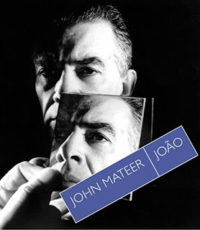
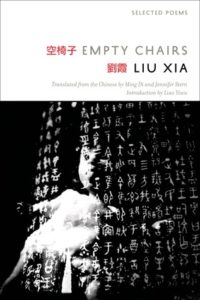 Empty Chairs
Empty Chairs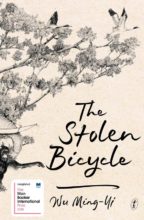 The Stolen Bicycle
The Stolen Bicycle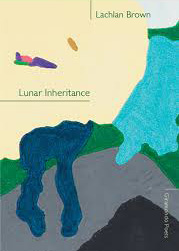 Lunar Inheritance
Lunar Inheritance NICHOLAS JOSE has published seven novels, including Paper Nautilus (1987), The Red Thread (2000) and Original Face (2005), three collections of short stories, Black Sheep: Journey to Borroloola (a memoir), and essays, mostly on Australian and Asian culture. He was Cultural Counsellor at the Australian Embassy Beijing, 1987-90 and Visiting Chair of Australian Studies at Harvard University, 2009-10. He is Professor of English and Creative Writing at The University of Adelaide, where he is a member of the J M Coetzee Centre for Creative Practice.
NICHOLAS JOSE has published seven novels, including Paper Nautilus (1987), The Red Thread (2000) and Original Face (2005), three collections of short stories, Black Sheep: Journey to Borroloola (a memoir), and essays, mostly on Australian and Asian culture. He was Cultural Counsellor at the Australian Embassy Beijing, 1987-90 and Visiting Chair of Australian Studies at Harvard University, 2009-10. He is Professor of English and Creative Writing at The University of Adelaide, where he is a member of the J M Coetzee Centre for Creative Practice.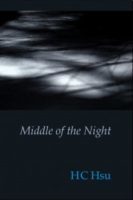 Middle of the Night
Middle of the Night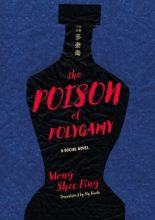 Genre of The Poison of Polygamy by Qiuping Lu
Genre of The Poison of Polygamy by Qiuping Lu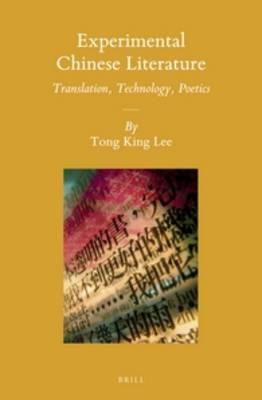 Experimental Chinese Literature: Translation, Technology, Poetics
Experimental Chinese Literature: Translation, Technology, Poetics